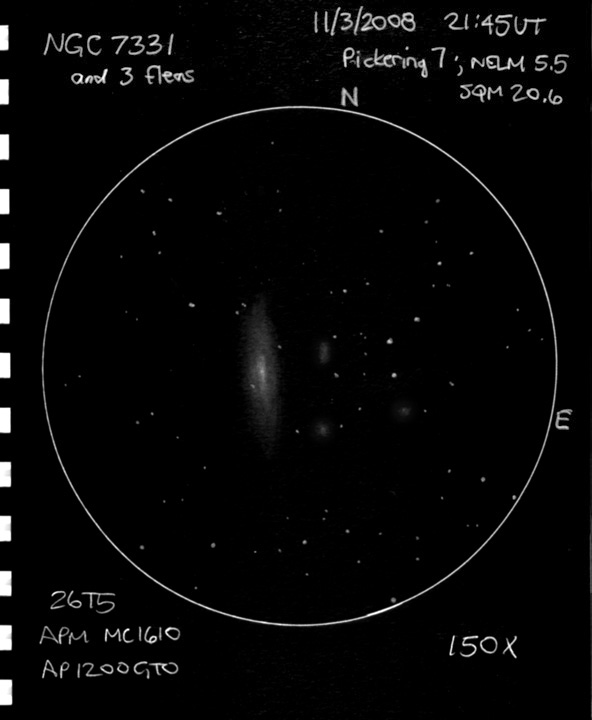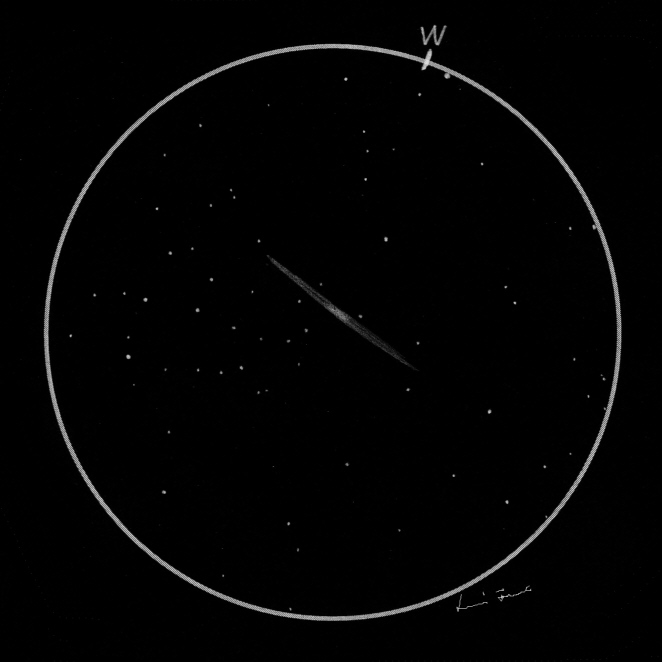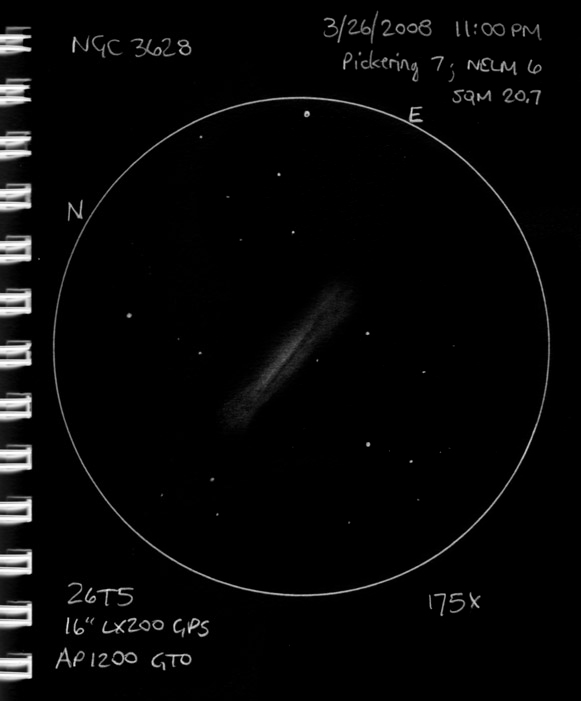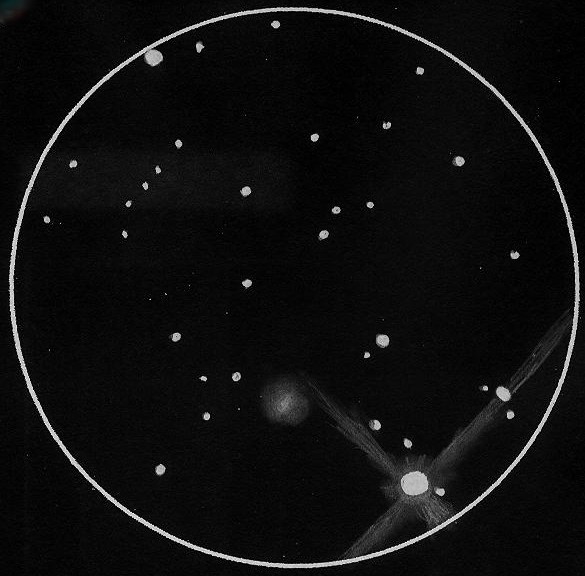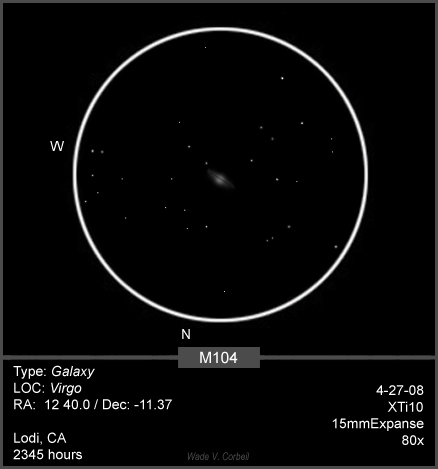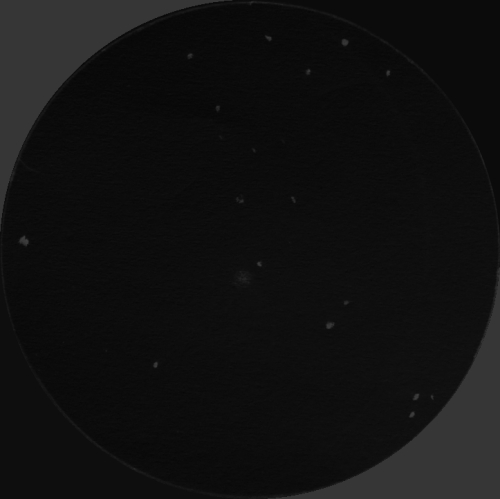
M77 (NGC 1068)
Sketch, Sketch Details and Note by Marek Plonka
Marek Plonka of Silesia Poland submitted this beautiful sketch of M77 (NGC 1068) and it’s stellar companions in the constellation Cetus. M77, at a distance of nearly 60 million light years, is one of the most distant galaxies in the Messier Catalog. The galaxy is huge, over 100,000 light years in diameter, making it larger than our own Milky Way Galaxy.
Sketch details:
Object name: M77 (NGC 1068) spiral galaxy
Scope: Skywather dobs 1200/200 + SWA 15mm
Place: Poland, Silesia, Skrzyszów
Seeing: 8/10 Transparency: 4/5
Date and time: 06.11.2008r, 9:00PM (21:00)
Technique: Pencil
Author: Marek Płonka (Poland, Silesia)
Note: I’ve always used only pencil. I’ve never corrected my sketches using computer software. I use GIMP only to improvement brightness, contrast, resize and crop images.


